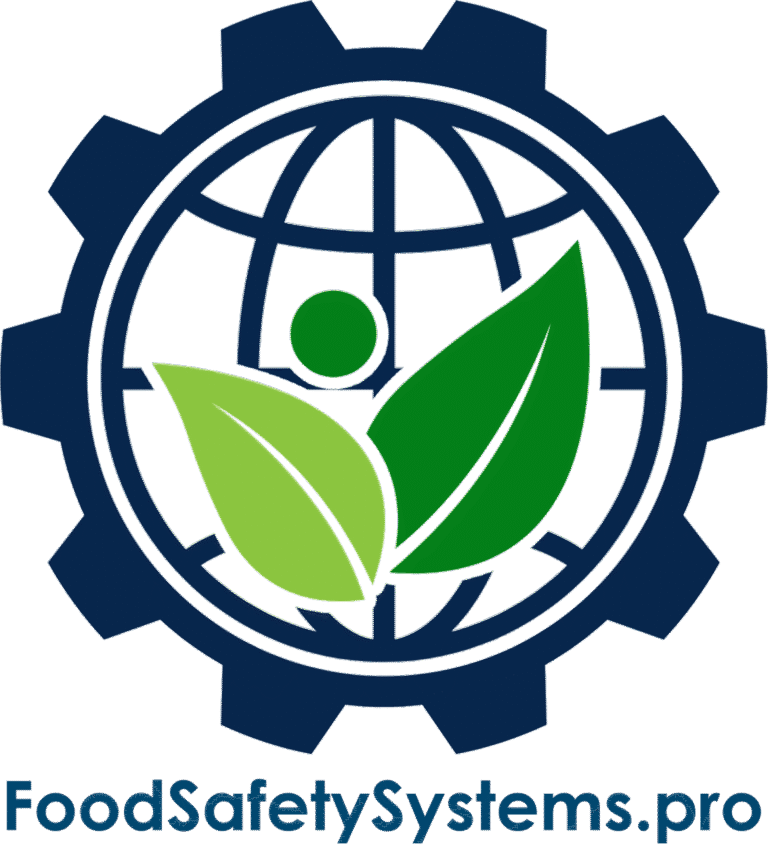Third-Party Audits
Aligned with SQF Code Edition 9 – System Element 2.10.3
Requirement Overview
SQF Code Edition 9, System Element 2.10.3, states:
“Where contracted, third-party audits shall be conducted by approved parties and at a frequency to meet customer or regulatory requirements. Audit reports shall be reviewed, and corrective actions taken where necessary.”
Third-party audits offer independent verification of your food safety program. These audits may be driven by regulatory obligations, customer expectations, or voluntary certifications.
Disclaimer: Food Safety Systems is not affiliated with or endorsed by the Safe Quality Food Institute (SQFI). This content is intended for educational and compliance reference. Please consult www.sqfi.com for official certification and audit information.

Key Compliance Objectives
-
✓ Comply with external audit and certification requirements
✓ Select qualified, accredited auditors
✓ Respond effectively to audit findings
✓ Maintain thorough documentation and audit records
Step-by-Step Compliance Implementation
1. Identify Third-Party Audit Requirements
-
Common Drivers:
-
• Regulatory (e.g., FSMA, USDA, CFIA)
• Customer mandates (e.g., retailers, distributors)
• Voluntary certifications (e.g., Organic, Gluten-Free, Halal)
Evidence to Maintain:
-
• Documented list of audit requirements
• Certification scopes and renewal timelines
• Buyer or retailer audit obligations
- • Regulatory (e.g., FSMA, USDA, CFIA) • Customer mandates (e.g., retailers, distributors) • Voluntary certifications (e.g., Organic, Gluten-Free, Halal)
- • Documented list of audit requirements • Certification scopes and renewal timelines • Buyer or retailer audit obligations
2. Select and Approve Qualified Auditors
-
Selection Criteria:
-
• Accredited certification bodies or auditors
• Industry-specific experience
• No conflicts of interest
Evidence to Maintain:
-
• Auditor contracts or agreements
• Accreditation certificates and résumés
• Internal approval or vetting documentation
- • Accredited certification bodies or auditors • Industry-specific experience • No conflicts of interest
- • Auditor contracts or agreements • Accreditation certificates and résumés • Internal approval or vetting documentation
3. Prepare for the Audit
-
Preparation Activities:
-
• Review previous audit findings and status of CARs
• Conduct internal audits or mock assessments
• Ensure relevant staff are trained and aware of audit scope
Evidence to Maintain:
-
• Pre-audit preparation checklists
• Staff training or readiness logs
• Facility walkthrough and gap analysis reports
- • Review previous audit findings and status of CARs • Conduct internal audits or mock assessments • Ensure relevant staff are trained and aware of audit scope
- • Pre-audit preparation checklists • Staff training or readiness logs • Facility walkthrough and gap analysis reports
4. Conduct the Audit & Address Findings
-
Post-Audit Response Includes:
-
• Timely review of audit reports
• Categorization and documentation of findings
• Corrective action implementation and verification
Evidence to Maintain:
-
• Audit reports with completion date
• Corrective action plans and resolution records
• Communication logs (internal and with the auditor)
- • Timely review of audit reports • Categorization and documentation of findings • Corrective action implementation and verification
- • Audit reports with completion date • Corrective action plans and resolution records • Communication logs (internal and with the auditor)
5. Monitor Audit Outcomes & Maintain Records
-
Continuous Improvement Practices:
-
• Maintain a history of audit results
• Analyze trends or repeated issues across audits
• Integrate learnings into SOPs and training
Evidence to Maintain:
-
• Audit history logs and summaries
• Trend reports across audit cycles
• Updated procedures and training content
- • Maintain a history of audit results • Analyze trends or repeated issues across audits • Integrate learnings into SOPs and training
- • Audit history logs and summaries • Trend reports across audit cycles • Updated procedures and training content
Common Audit Findings & Recommended Fixes
Audit Finding
Recommended Action
No evidence of completed third-party audits
Maintain a centralized audit record system
Auditor not appropriately qualified
Verify auditor accreditation and documentation
Unaddressed findings in audit report
Log findings and implement corrective action plan
Audit results not evaluated internally
Conduct annual reviews and team debriefs
| Audit Finding | Recommended Action |
|---|---|
| No evidence of completed third-party audits | Maintain a centralized audit record system |
| Auditor not appropriately qualified | Verify auditor accreditation and documentation |
| Unaddressed findings in audit report | Log findings and implement corrective action plan |
| Audit results not evaluated internally | Conduct annual reviews and team debriefs |
Auditor Verification Checklist
Third-party or SQF auditors may review:
-
• Contracts and credentials of external auditors
• Completed third-party audit reports and findings
• Documentation of corrective actions and follow-ups
• Annual audit trend reviews or management summaries
Implementation Roadmap
Build Your Program
-
✓ Identify applicable third-party audits
✓ Maintain audit requirements and certification scopes
Train and Validate
-
✓ Train staff on audit procedures and expectations
✓ Conduct pre-audit walkthroughs
Operate and Monitor
-
✓ Complete third-party audits as scheduled
✓ Respond to findings with verified CARs
Improve Continuously
-
✓ Review trends across audit cycles
✓ Update internal programs based on outcomes
Why This Matters?
Third-party audits:
-
✓ Demonstrate credibility and transparency
✓ Support compliance with clients and regulators
✓ Strengthen internal systems through external evaluation
✓ Prepare teams for recertification or new market access
Want Help Structuring Your Audit Program?
Food Safety Systems offers:
-
✓ Internal audit SOPs and readiness guides
✓ Sample audit response templates
✓ Staff audit briefing materials
✓ Corrective action and trend tracking tools
Privacy Policy | Terms of Service | Disclaimer
Powered by Consultare Inc. Group, A Compliance Company







